Calf stretching exercises are essential for improving flexibility‚ preventing injuries‚ and enhancing athletic performance. They target the gastrocnemius and soleus muscles‚ promoting better range of motion and reducing muscle tightness. Regular practice‚ using techniques like towel stretches‚ wall pushes‚ or heel raises‚ can strengthen calves and support overall lower limb health. These exercises are simple‚ effective‚ and can be done at home with minimal equipment‚ making them a great addition to any fitness or rehabilitation routine.
Why Calf Stretches Are Important
Calf stretches are crucial for maintaining muscle flexibility‚ preventing injuries‚ and enhancing overall lower limb function. Tight calf muscles can limit mobility and increase the risk of strains or pulls‚ especially during physical activities like running or jumping. Regular stretching improves blood flow to the calves‚ reducing muscle soreness and promoting recovery after workouts. Additionally‚ calf stretches enhance athletic performance by allowing for more powerful movements and better endurance. They also play a key role in rehabilitation after injuries or surgeries‚ helping to restore strength and range of motion. Incorporating calf stretches into a daily routine can prevent chronic tightness and support long-term muscle health. Whether for athletes or individuals with sedentary lifestyles‚ calf stretches are a simple yet effective way to maintain optimal leg function and overall well-being.

How Calf Stretches Can Help with Injury Recovery
Calf stretches are a vital component of injury recovery‚ particularly for strains‚ pulls‚ or post-surgical rehabilitation. Gentle stretching helps restore flexibility and range of motion‚ reducing stiffness and promoting healing. By improving blood circulation‚ calf stretches accelerate the delivery of nutrients and oxygen to damaged tissues‚ fostering a faster recovery. They also strengthen the muscles and tendons‚ making them more resilient to future injuries. Many rehabilitation programs include exercises like towel stretches‚ wall pushes‚ and heel raises‚ which are easy to perform at home. Consistent practice can prevent chronic tightness and support the return to normal activities or sports. Calf stretches are often recommended by physiotherapists and surgeons as a non-invasive‚ effective method to aid in the recovery process‚ ensuring a smoother transition back to full mobility and strength.
Improving Athletic Performance Through Calf Stretching
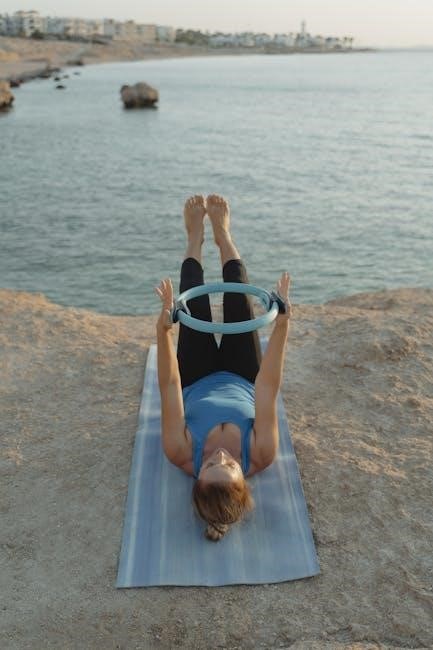
Calf stretching is a cornerstone for enhancing athletic performance‚ particularly in activities like running‚ jumping‚ and cycling. Strong‚ flexible calf muscles improve running efficiency‚ power‚ and endurance. Stretching increases muscle elasticity‚ allowing for greater force production and speed. It also enhances range of motion‚ enabling better technique and movement efficiency. Regular calf stretches reduce the risk of muscle strains and injuries‚ which are common in high-intensity sports. Additionally‚ improved flexibility allows athletes to maintain optimal form during training and competition‚ reducing fatigue and boosting overall performance. Many athletes incorporate standing calf stretches‚ seated stretches‚ and dynamic stretches into their routines to prepare for physical demands. Consistent practice strengthens the calves‚ making them more resilient and capable of handling repetitive stress. This makes calf stretching an essential practice for athletes striving to elevate their performance and achieve peak physical condition.
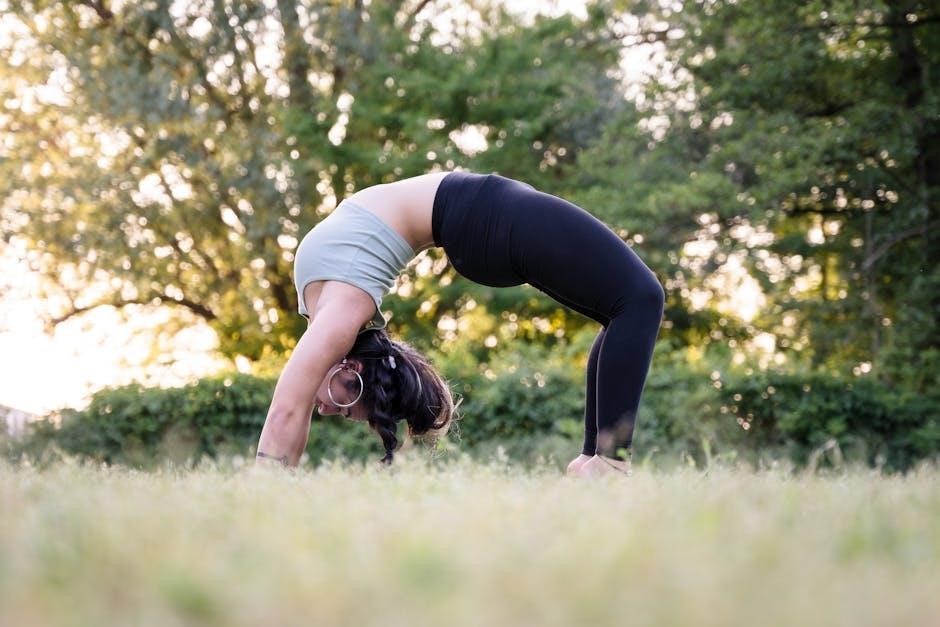
Enhancing Flexibility and Range of Motion
Regular calf stretching significantly enhances flexibility and range of motion‚ which are crucial for both daily activities and athletic endeavors. Tight calf muscles can limit movement and lead to poor posture or gait issues. By incorporating exercises like standing calf stretches‚ towel stretches‚ and wall pushes‚ individuals can improve muscle elasticity and joint mobility. These stretches target the gastrocnemius and soleus muscles‚ promoting better ankle and knee movement. Increased flexibility reduces the risk of muscle strains and improves overall physical function. Additionally‚ stretching enhances blood flow to the muscles‚ aiding in recovery and reducing stiffness. Consistent practice‚ even for a few minutes daily‚ can lead to noticeable improvements in flexibility. Proper form and holding stretches for 20-30 seconds ensure maximum benefits without causing discomfort or injury. Over time‚ enhanced range of motion supports better performance in activities like walking‚ running‚ or climbing stairs‚ making calf stretching a vital practice for maintaining mobility and independence.
Types of Calf Stretching Exercises
Calf stretching exercises include standing stretches‚ seated stretches‚ towel stretches‚ and dynamic stretches. Each targets calf muscles differently to improve flexibility and range of motion effectively.
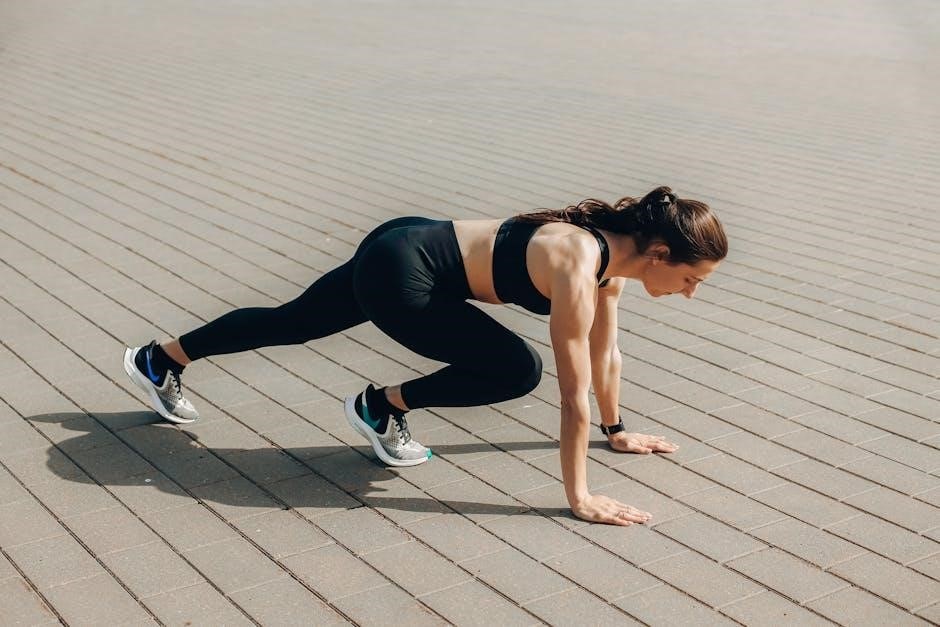
Standing Calf Stretches
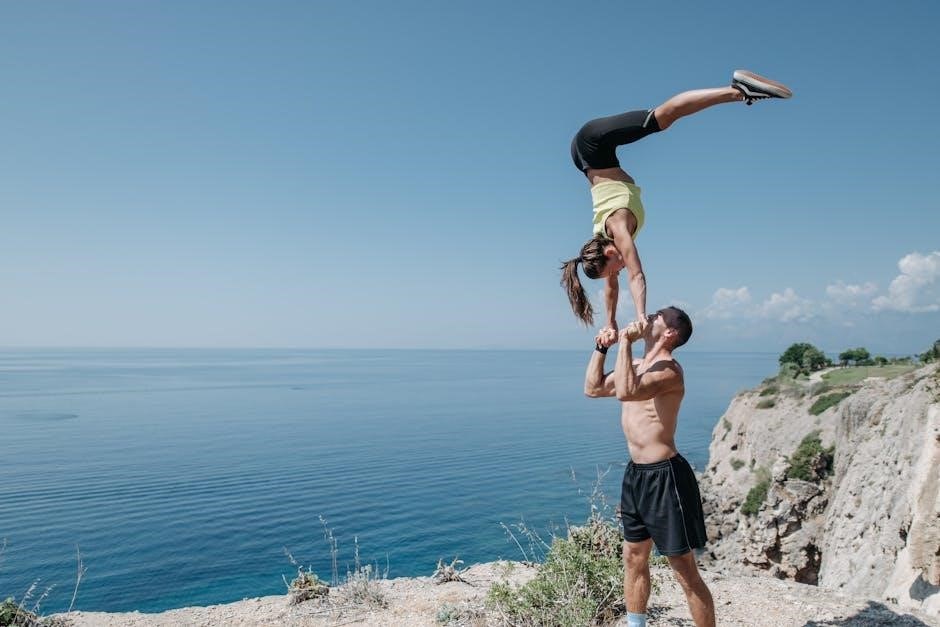
Standing calf stretches are a popular and effective way to improve flexibility in the gastrocnemius muscle. To perform this exercise‚ face a wall and place your hands at eye level for support. Extend one leg behind you‚ keeping the heel on the ground and the knee straight. Slowly lean forward‚ bending the front knee slightly‚ until a gentle stretch is felt in the calf of the back leg. Hold this position for 20-30 seconds and repeat 3-5 times on each side. For a deeper stretch‚ the back foot can be slightly turned inward; This exercise is ideal for improving range of motion and preventing injuries. It can be done anywhere without equipment‚ making it a convenient addition to daily routines. Regular practice helps reduce muscle tightness and enhances athletic performance. Over time‚ this stretch can also contribute to better posture and overall lower limb health.
Seated Calf Stretches
Seated calf stretches are an excellent option for targeting the soleus muscle‚ complementing other exercises like standing stretches. To perform this exercise‚ sit on the floor with your legs extended straight in front of you. Loop a towel or resistance band around the ball of one foot‚ holding both ends of the towel in your hands. Gently pull the towel toward you‚ keeping your knee straight‚ until a stretch is felt in the calf. Hold this position for 20-30 seconds and repeat 3-5 times on each side. This stretch is particularly effective for individuals who spend long periods sitting or have tightness in the lower legs. It can also be modified by bending the knee slightly to focus on different areas of the calf muscle. Regular practice improves flexibility‚ reduces muscle tension‚ and supports overall lower limb mobility. This exercise is especially useful for those who prefer a seated position or have limited space for stretching.
Towel Calf Stretches
Towel calf stretches are a versatile and effective way to improve flexibility and reduce muscle tension in the calves. To perform this exercise‚ sit on the floor with your legs extended straight in front of you. Loop a towel around the ball of one foot‚ holding both ends of the towel in your hands. Gently pull the towel toward you‚ keeping your knee straight‚ until you feel a stretch in the calf. Hold this position for 20-30 seconds‚ then release and repeat 3-5 times on each side. This stretch is particularly useful for targeting the Achilles tendon and soleus muscle. It is a low-impact exercise that can be done at home without any special equipment. Regular practice helps to enhance flexibility‚ reduce tightness‚ and lower the risk of injury. Towel calf stretches are ideal for individuals who prefer a gentle yet effective stretching routine as part of their daily fitness or rehabilitation program.
Dynamic Calf Stretches
Dynamic calf stretches are active movements that prepare the muscles for physical activity‚ improving flexibility and reducing stiffness. These exercises involve controlled leg movements‚ such as ankle pumps‚ heel raises‚ and calf circles. Ankle pumps‚ where the foot is flexed up and down‚ are a simple yet effective dynamic stretch. Calf raises‚ performed by lifting the heels off the ground while standing‚ strengthen and stretch the gastrocnemius and soleus muscles simultaneously. Dynamic stretches are particularly beneficial before sports or intense workouts‚ as they increase blood flow and warm up the muscles‚ reducing injury risk. They can be done anywhere without equipment‚ making them a practical choice for athletes and fitness enthusiasts. Incorporating dynamic calf stretches into a pre-workout routine enhances performance and ensures optimal muscle readiness‚ promoting both strength and flexibility while minimizing the risk of strain or injury during physical activities.

Advanced Calf Stretching Techniques
Advanced calf stretching incorporates tools like foam rollers and resistance bands for deeper muscle engagement. Techniques include progressive overload‚ eccentric stretching‚ and dynamic movements to enhance flexibility and strength beyond basic exercises.
Using a Wall for Deep Calf Stretches
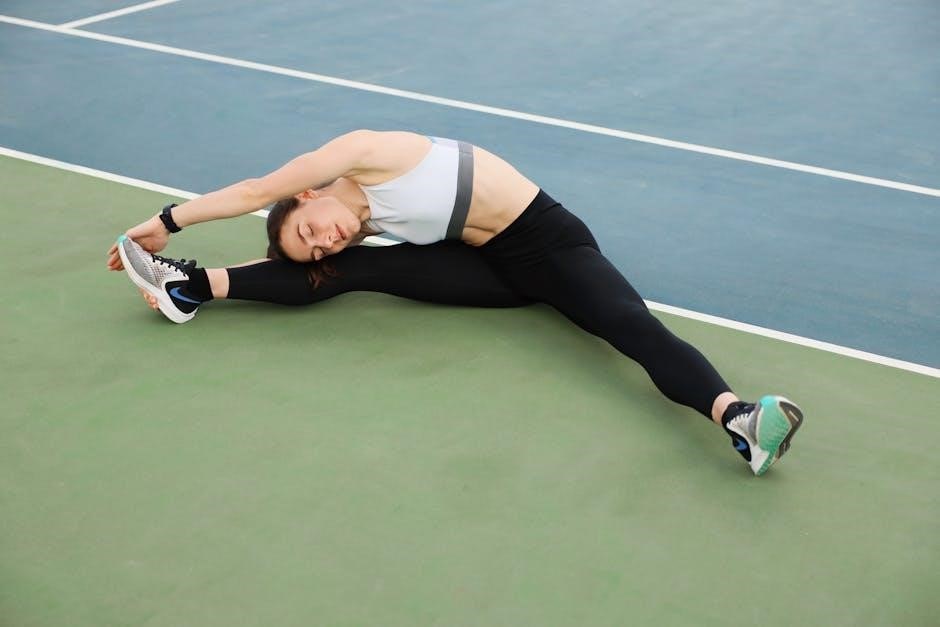
Using a wall for deep calf stretches is an effective way to target both the gastrocnemius and soleus muscles. Start by facing a wall and placing your hands at eye level for support. Position one leg behind you‚ keeping the heel on the floor‚ while the other leg is bent in front. Slowly lean toward the wall‚ bending the front knee‚ until a stretch is felt in the back leg. Hold this position for 20-30 seconds and repeat 3-5 times on each side. For a deeper stretch‚ slightly turn the back foot inward. This technique allows for controlled pressure and is ideal for improving flexibility and relieving tightness. It’s particularly beneficial for runners or individuals with tight calf muscles. Regular practice can enhance athletic performance and reduce the risk of injury. Always ensure the stretch is comfortable and avoid bouncing to prevent muscle strain.
Incorporating Foam Rollers for Calf Stretching
Incorporating foam rollers into your calf stretching routine can enhance flexibility and muscle recovery. Start by sitting on the floor with your legs extended. Place the foam roller under your calf muscles‚ just below the knee. Slowly roll the foam roller downward toward your Achilles tendon‚ applying gentle to moderate pressure. Focus on areas that feel tight or knotted‚ holding for 20-30 seconds to release tension. Repeat this process 2-3 times for each leg. Foam rolling improves blood circulation‚ reduces muscle soreness‚ and helps break down adhesions in the tissue. It’s an excellent complement to static stretches and can be done before or after workouts. For deeper relief‚ apply more pressure‚ but avoid causing pain. Regular foam rolling can enhance recovery‚ improve range of motion‚ and reduce the risk of injury; It’s a versatile tool for maintaining healthy‚ flexible calf muscles year-round.
Stretching with Resistance Bands
Stretching with resistance bands is a highly effective method for improving calf flexibility and strength. Begin by anchoring the band to a stable object or holding it in your hands. Loop the band around the ball of your foot‚ keeping your leg straight. Slowly pull the band toward your body‚ flexing your foot and stretching your calf muscles. Hold for 20-30 seconds and repeat 3-5 times on each leg. Resistance bands provide a controlled tension that enhances stretch depth and engages the muscles actively. This technique is particularly beneficial for runners and athletes‚ as it strengthens the calves and Achilles tendon‚ reducing injury risk. For a more intense stretch‚ increase the band’s resistance or perform the exercise with a bent knee to target the soleus muscle. Regular use of resistance bands can improve muscle elasticity and overall lower limb function‚ making them a valuable addition to any stretching routine.
Progressive Calf Stretching Routines
Progressive calf stretching routines are designed to gradually increase flexibility and strength over time. Start with basic stretches like seated or standing calf stretches‚ holding each for 20-30 seconds and repeating 3-5 times. As flexibility improves‚ incorporate dynamic stretches such as calf raises or leg swings to enhance range of motion. Advanced techniques include using foam rollers or resistance bands to deepen the stretch and engage the muscles more intensely. For example‚ loop a resistance band around the ball of your foot and gently pull back to stretch the calf while maintaining a straight or slightly bent knee. Over weeks‚ gradually increase the duration‚ intensity‚ or resistance to continue progressing. Consistency is key‚ as progressive stretching helps prevent plateaus and ensures continuous improvement in calf flexibility and strength. This approach is ideal for athletes or individuals seeking long-term muscle health and injury prevention.



